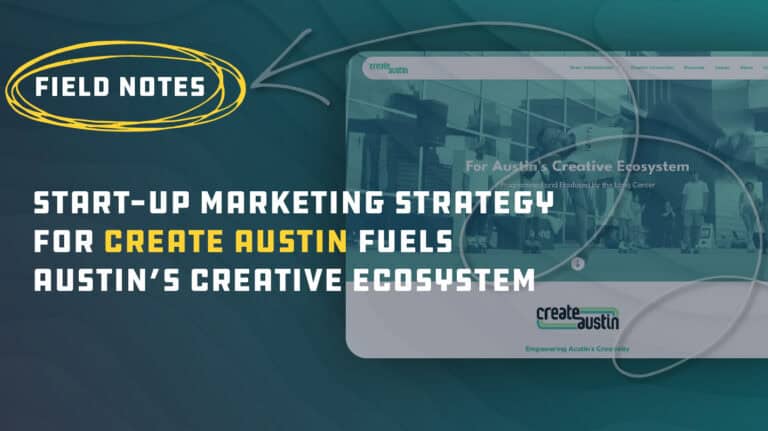We’ve got analytics coming at us from every angle – website traffic, social media engagement, email open rates – you name it. It’s easy to get overwhelmed with all the data that pours in at the end of the month, quarter to quarter, or when planning for the following year. Amidst all the numbers and graphs, there’s a way to cut through the noise and focus on what truly matters. But to truly understand the impact of your marketing efforts, you need the correct data.
At Seventh Scout, we analyze data based on our clients’ inbound marketing channels. These include:
- Website Statistics
- Social Media Results
- Community
- Engagement
- Achievements
- Digital Paid Ads
- Effectiveness
- Search Engine Optimization (SEO) Indicators
- Content Performance
- HubSpot Analytics
Regular analysis of these channels allows us to track progress, identify trends, and make timely adjustments to our marketing strategies. It’s like having a compass in the ever-changing digital landscape, guiding us toward our goals.
When it comes to reporting, the report’s purpose influences what’s included. There are universal metrics you’ll want to have – enter Key Performance Indicators (KPIs) – in addition to niche data specific to individual goals or campaigns for that specific period of time.
We’ll categorize our KPIs based on the specific inbound marketing channel we’re examining (as listed above).
How To Measure Digital Marketing Performance
WEBSITE
Website Traffic – Start by measuring the number of visitors to your website. This metric tells you if your content and SEO efforts are driving traffic.
Seventh Scout Tip: To fine-tune your marketing strategies, it’s essential to know where your traffic is coming from and who they are. Break down sources into:
- Traffic Source: Organic, Direct, Referral, Email, Social, or Paid
- Returning vs. New Visitors
- Device Type
- Custom Audience Attributes: Location, interests, industry, gender, etc.
Top Performing Pages – The pages that average the most visits and highest engagement rate. This is a great way to see how visitors find your website and to understand what content your audience is resonating with.
Bounce Rate – The percentage of visitors who leave your site after viewing only one page. A high bounce rate may indicate a problem with your landing page or content.
Time on Page – This reveals how much time visitors spend engaging with your content. Longer times generally indicate more interest.
Website Health – A website’s overall condition, performance, and functionality. Performance can include security, accessibility, and user experience.
Social Media Channels
Followers – Individuals or businesses who have chosen to subscribe to your company’s social media channels.
Seventh Scout Tip: In the contemporary business landscape, where a substantial follower count was once perceived as a symbol of success, value now lies in cultivating a vibrant and actively engaged online community.
Reach/Impressions – Number of users who have been exposed to your content or posts. Measures the potential audience size that has seen the content, even if they didn’t necessarily engage with it.
Top Performing Posts – Content pieces or posts with the highest levels of engagement, such as likes, shares, comments, and click-throughs. These posts are typically the most successful in reaching and resonating with the target audience.
COMMUNITY ENGAGEMENT
Engagement Rates – Used to measure the level of interaction and connection within a community or audience. It is typically computed by dividing the total number of engagements (likes, comments, shares, etc.) by the total reach/impressions. A higher engagement rate indicates a more active and engaged community.
DIGITAL PAID ADS
Impressions- The number of times an ad is displayed or shown to a user in a digital advertising campaign. It measures how often the ad is viewed, regardless of whether it is clicked or not.
Clicks – The number of times users interact with an ad by clicking on it. Clicks are a fundamental metric for evaluating the immediate engagement an ad receives.
Cost-Per-Click (CPC) – The price an advertiser pays each time a user clicks on their ad. It provides a direct measure of the effectiveness and efficiency of an advertising campaign. CPC is often sought after, as it indicates cost-effectiveness.
Click Through Rate (CTR) – Percentage calculated by dividing the number of clicks on an ad by the number of impressions it receives. Provides insights into the effectiveness of an ad in encouraging user engagement. A higher CTR typically indicates a more compelling and relevant ad.
Conversions – Conversions occur when a user takes a desired action as a result of interacting with an ad. Action can vary depending on the campaign’s objectives, such as making a purchase, signing up for a newsletter, or filling out a contact form.
Cost Per Conversion – Total campaign cost divided by the number of conversions it generates. Measures the efficiency in terms of cost-effectiveness. A lower cost per conversion indicates better efficiency in achieving campaign goals.
SEARCH ENGINE OPTIMIZATION (SEO)
Organic Keyword Ranking – The number of keywords driving organic traffic to your site. Higher rankings and more keywords mean increased organic traffic.
Rank of Target Keywords – These keywords best reflect your business and the content on your website. A higher ranking in these keywords reflects more visibility on organic search.
Page Authority or Domain Authority – Grades the overall website or webpage quality. The higher the score, the more assumed weight a domain’s outbound links to another site could have.
Backlinks – Search engines view backlinks as votes of confidence. Pages with lots of backlinks often rank higher on search engines.
HUBSPOT
Conversion Rate – Are visitors taking the desired actions on your site? This could be signing up for a newsletter, making a purchase, downloading content, or filling out a contact form.
Email Click-Through Rate (CTR) – Measuring your click rate shows who is truly engaged with your content because they took action to click on something in your email.
Seventh Scout Tip: Ensure you compare the Open Rate and Unsubscribe Rate with the CTR. These metrics can help you refine your content and lists.
Lead Generation – A new lead can be someone signing up for a free trial or creating an account on your online retail site.
Source Traffic – Allows you to see where your new leads originate from, what channels are performing the best, and where you might have additional opportunities.
NICHE DIGITAL CONTENT
Content marketing efforts can be analyzed broadly using all the metrics above. But what if you have a specific content piece you want to measure? Regardless of the media format, some key statistics to measure include:
Page Traffic – The number of visitors a page attracts.
Time on Page – Reveals the level of engagement by visitors.
Company or Client Response – Gauges direct interactions or inquiries generated.
Social Media Engagement – Shares and overall engagement metrics provide valuable feedback on the content’s virality and relevance.
Video Views & Duration – Insights into viewer engagement and attentiontof content.
New Subscribers – Indicate a growing audience.
Downloads – Reflect the content’s perceived value.
Putting Together Your Digital Marketing Reporting
Regular reports are your compass in the digital landscape. By diligently tracking and analyzing these digital marketing metrics, you gain insights that empower you to refine your inbound marketing strategies, allocate resources wisely, and ensure that every move you make is data-driven.
Seventh Scout Tip: We like to compare progress each quarter, as well as a year over year review. This gives our team the ability to offer creative ideas and recommendations for our clients as well as recognize successes (and sometimes failures too!).
But how do you prioritize what metrics to include in your report?
First, there are a few metrics that you’ll want to include every time. These include website traffic and health, social media engagement, paid advertising effectiveness, SEO keywords ranking, visibility changes, and HubSpot leads.
Next, identify the metrics that stand out the most. Remember, they could be positive or negative and not included in the metrics listed in this guide.
Lastly, review the goals and recommendations you set for the year and/or time period you are analyzing. Add recaps or metrics specific to your recommendations or goals, highlighting actionable items for the next reporting check-in.
For Example: Company A opened a new location in another state. A goal for the year may be to increase audience reach in this new location. You’ll want to evaluate metrics specific for this. That could be through social media followers, community engagement, website traffic, or an email campaign to a new list or lead generation.
More Tips From Seventh Scout:
Discover the toolbox we wield to gather top-notch data for our reports. Explore our curated list of recommended marketing tools! It’s the gift that keeps on giving!





